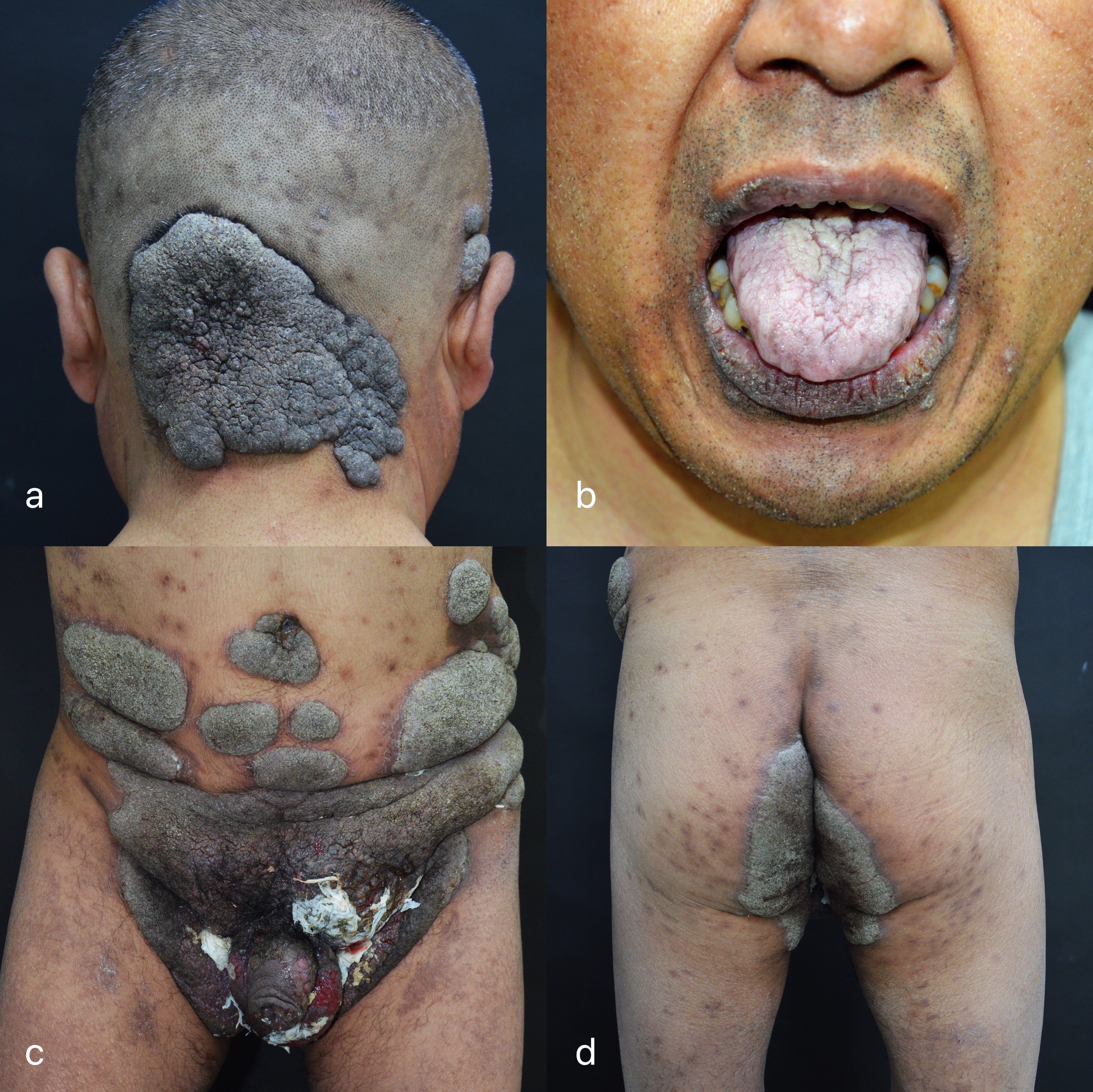Translate this page into:
Extensive Neumann type of pemphigus vegetans
Corresponding author: Prof. Hong Cai, Department of Dermatology, Air Force Medical Center, PLA. No.30 of Fucheng Road. Beijing 100142, China. ch1031@163.com
-
Received: ,
Accepted: ,
How to cite this article: Chen QI, Cai H, Sun P. Extensive Neumann type of pemphigus vegetans. Indian J Dermatol Venereol Leprol 2023;89:793
A 48-year-old man presented with a 1-year history of verrucous plaques on his head-neck [Figure 1a] and trunk [Figure 1c and 1d], tongue was fissured and cerebriform [Figure 1b], clinically consistent with a diagnosis of pemphigus vegetans. Histopathology showed hyperkeratosis, epidermal acanthosis, suprabasal cleft with acantholytic cells along the basal layer, eosinophilic abscesses above the basal layer, dermal papilloedema and infiltration of lymphocytes and eosinophils in the superficial dermis. Direct immunofluorescence revealed intercellular IgG C3 deposition in the lower epidermis. Indirect immunofluorescence was positive—anti-desmoglein-1, 34.09 U/mL, anti-desmoglein-3 286.18 U/mL (>20 U/mL is positive for both). Pemphigus vegetans was diagnosed, which responded well to systemic corticosteroids.

- Verrucous plaques and ulcerated lesion affecting the head-neck (a), trunk and groin (c-d). The tongue shows fissured and cerebriform morphologic features (b).
Pemphigus vegetans is a rare subtype of pemphigus vulgaris, which usually occurs in the groin, axilla, scalp and perioral area. The rash presents as hyperplastic plaques rather than blisters or pustules, and people with extensive systemic involvement are easily misdiagnosed. Histopathology and immunofluorescence studies are important for diagnosis.
Declaration of patient consent
The authors certify that they have obtained all appropriate patient consent.
Financial support and sponsorship
Nil.
Conflict of interest
There are no conflicts of interest.





